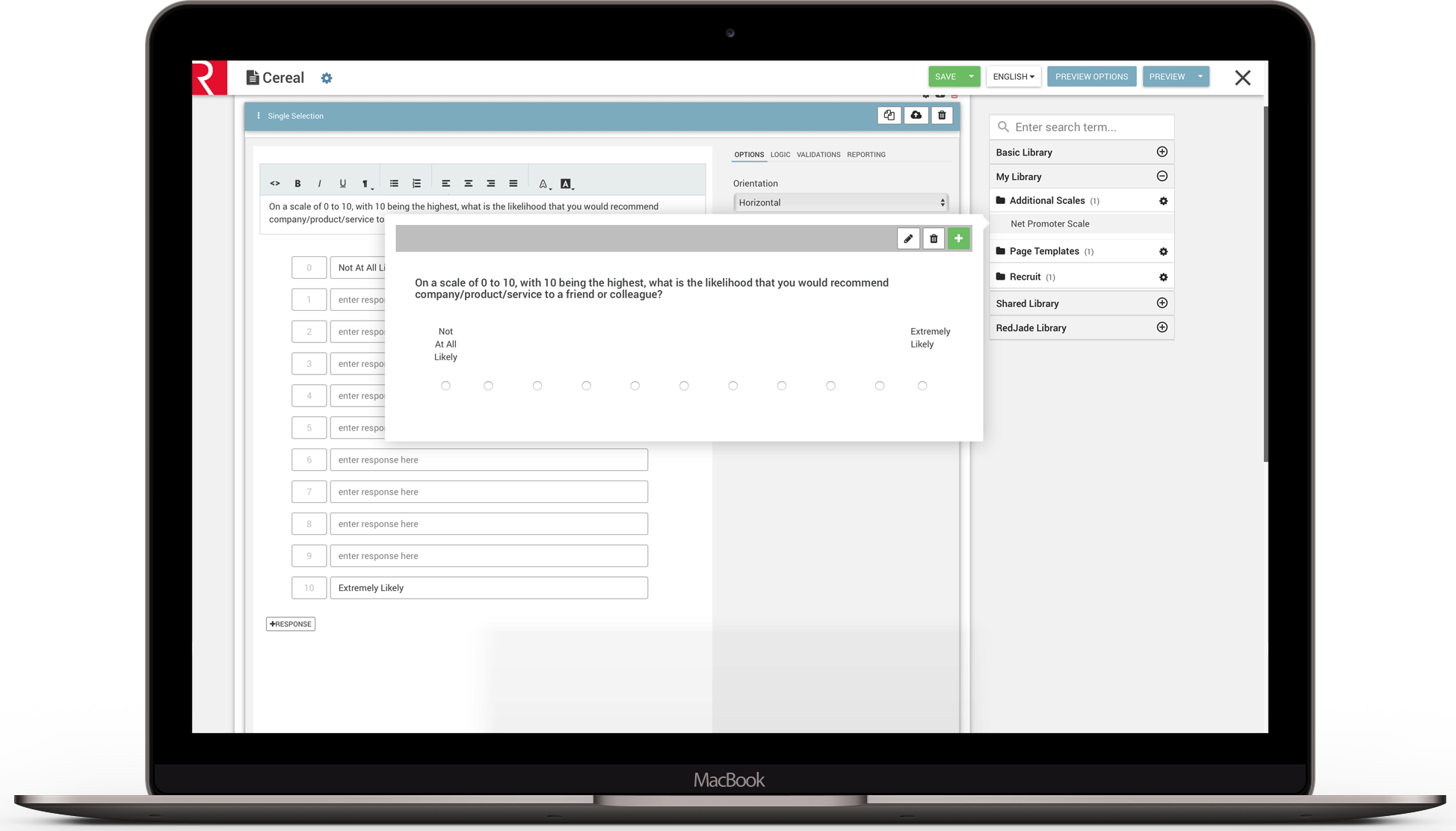The Net Promoter Score® was developed by Fred Reicheld and Bain & Company in the early 2000’s. The Net Promoter Score measures the willingness of customers to recommend a company’s goods or services. The typical NPS® question is, “On a scale of 0 to 10, with 10 being the highest, what is the likelihood that you would recommend company/product/service to a friend or colleague?”. To measure the Net Promoter Score, simply subtract the percent of the consumers that rated the product a 0 to 6 from those that rated the product a 9 or 10.
Measuring the Net Promoter Score allows you to do a number of things! Identify key customer loyalty drivers, benchmark against competitors, identify at-risk customers and brand ambassadors. Measuring the NPS of not just your goods and services, but of those of your competitors is key to understanding your organizations brand equity overall and relative to others in your industry.
Measuring Net Promoter Score
As mentioned above, the NPS is an 11-point scale from 0 to 10 with only 0 and 10 labelled – Not At All Likely to Extremely Likely. The scale classifies consumers into three groups: Detractors (0-6), Passives (7-8) and Promoters (9-10). Net Promoter Score is typically asked as close to the customer interaction with a service or transaction or as part of a consumer pulse study (measuring NPS over time).
Promoters are those individuals that are loyal users of your product or service and are excited about your company and/or products – they will continue purchasing your product or service, as well as refer others. Passives are generally satisfied with your goods/services, but are not as expressive or excited about your goods/services. Passives may be more vulnerable to competitive offerings and are more likely to switch to other goods/services.
Detractors can diminish brand equity by spreading negative thoughts and ideas about your goods/services through social media (Facebook, Yelp, etc.) or by word of mouth. These consumers should be contacted in an effort to resolve issues before they have a chance to diminish brand equity. Organizations with the highest Net Promoter Scores work proactively to correct issues in an effort to convert them to Promoters. Reaching out to Detractors provides a unique opportunity for organizations.
Calculating Net Promoter Score
The Net Promoter Score is calculated by subtracting the percentage of Detractors from the percentage of promoters.
NPS = % of Promoters – % of Detractors
or
NPS = (# of Promoters / Total Respondents) – (# of Detractors / Total Respondents)
The score is typically displayed as a whole number (taking the NPS calculation and multiplying by 100) and ranges from -100 (all Detractors) to +100 (all Promoters)
Thoughts on Net Promoter Score
The Net Promoter Score is an easy question for consumers to understand and many consumers are willing to take a short survey. Many organizations ask one or two questions following NPS. The first being, “Why?” and the second (assuming the answer isn’t 10), “What would it take to raise our score by just one point?”. In other words, what would it take for you to rate our goods or services a 10 instead of a 9 or a 7 instead of a 6.
Monitoring NPS over time allows organizations to understand where their goods/services stand at a given point in time and how the goods/services are performing over time. Continual observation of Net Promoter Score allows you to identify Detractors and interact with them before they have a chance to diminish your brand equity. A positive, personal interaction with a Detractor may provide you with a unique opportunity to turn that consumer into a Promoter.
Contact us today to learn more about how monitoring your Net Promoter Score can lead to an increase in your bottom line.
“Net Promoter, Net Promoter Score and NPS are registered trademarks of Bain & Company, Inc., Satmetrix Systems, Inc., and Fred Reichheld.”

